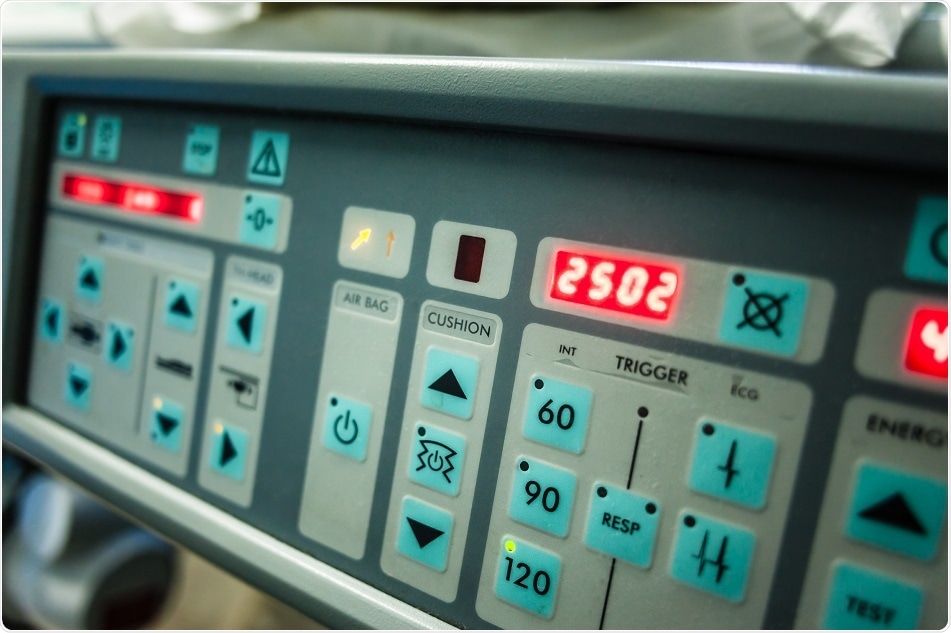Ureteric Calculi Treatment Options

Ureterolithiasis, also known as ureteric calculi, is the presence or formation of stones within the ureters, which are the tubes responsible for the passage of urine from the kidneys to the bladder. Most of these stones, approximately 80%, are found to be composed predominantly of calcium. Around 15% of them are made of struvite, which is magnesium ammonium phosphate formed by urea-splitting gram-negative bacteria. A smaller percentage of cases is made up of uric acid stones, while an even smaller number of them contain cysteine.

Credit: Dario Lo Presti/ Shutterstock.com
The environmental factor considered to be the most important cause of stone formation is inadequate fluid intake. Other factors implicated in the etiopathogenesis are diet, heredity, urinary tract anatomical abnormalities, chronic urinary tract infections (UTIs), hormonal imbalances, metabolic dysfunction and dry/ hot climates. Ureterolithiasis may cause a patient to experience colicky pain that is abrupt in onset and accompanied by symptoms, such as nausea, vomiting and hematuria (i.e. blood in the urine). Depending on where within the ureters the stones are impacted, the pain may radiate to the back, flank or lower abdomen.
A number of imaging modalities, together with urinalysis and blood tests may be employed to aid in the diagnosis of ureteric calculi. Most notably, ultrasonography, kidney-ureter-bladder (KUB) radiographs and computed tomography (CT) scans may be used. Other less frequently used diagnostic approaches are pyelography and renal nuclear scans with radioisotopes.
Several factors, such as stone composition, size and associated symptoms are taken into account when determining what treatment approaches to take for the management of ureteric calculi. Some stones require only observation and analgesics with the anticipation that they will pass spontaneously. In contrast, other stones may require pharmacotherapy, mechanical or surgical therapy.
Observation and analgesia
The wait-and-watch approach is adopted for stones that are small (i.e. a diameter less than 4 mm), because these have a higher chance of passing out of the body spontaneously in the urine. Spontaneous passage of ureteric calculi is inversely proportional to the size (i.e. the larger the stone, the less likely it is to pass on its own). Other predictors of spontaneous stone passage are the exact location within the ureter, and the shape of the stone. Stones lodged at the ureteropelvic junction, for example, are more difficult to pass. Patients are encouraged to increase their fluid intake during the observation period.
Pharmacotherapy
Ureteric calculi which are composed of uric acid or cysteine may be managed with drug therapy to bring about their dissolution. Alkalization of the urine at a pH between 6.5 – 7.0 may be achieved with agents like potassium citrate to encourage the dissolution of uric acid stones. This is because these stones are fostered by acidic environments; thus, making the urine more alkaline inhibits formation of new calculi and further growth of existing calculi. This approach can also be used for the dissolution of cysteine calculi, but they are more difficult to dissolve. In contrast to both uric acid and cysteine calculi, it is impossible to dissolve calcium stones by pharmacotherapy.
Surgical therapy
Stones that fail to pass spontaneously, or those too large to pass, or stones associated with other serious complications, are candidates for surgical therapy. Infection is a particular complication that requires urgent attention. Surgical options include stenting, ureteroscopy and extracorporeal shockwave lithotripsy (ESWL).
Stents are inserted endoscopically into the affected ureter to keep the ureter patent and so ensure that the ureter will be able to drain urine from the kidneys to the bladder. Furthermore, they act as stabilizing landmarks during ESWL, but may be a bit uncomfortable for the patient.
ESWL, as opposed to stenting and ureteroscopy, is the least invasive of the three methods. It employs sound waves at very high energy to break up large ureteric calculi into smaller chunks that are capable of being passed in the urine. This mode of therapy is appropriate for stones that are smaller than 20 mm in diameter, but it is not suitable even then in some situations.
For example, pregnancy is a contraindication to the use of ESWL. Stones that are between 10 – 20 mm can be manipulated by ureteroscopy, which is performed with the help of an endoscope equipped with a basket to capture stones. In some cases, extra laparoscopic ports are used to introduce special tools to fragment slightly larger stones before capturing them.
References
- http://uroweb.org/wp-content/uploads/EAU-Guidelines-Urolithiasis-2015-v2.pdf
- http://pmj.bmj.com/content/postgradmedj/27/305/128.full.pdf
- https://www.ncbi.nlm.nih.gov/pmc/articles/PMC2600100/
- https://radiopaedia.org/articles/ureter
- https://www.ncbi.nlm.nih.gov/pmc/articles/PMC2518455/
Further Reading
- All Urolithiasis Content
- What is Urolithiasis?
- Causes of Ureteric Calculi
- What is Urolithiasis?
- Ureteric Calculi
Last Updated: Aug 23, 2018

Written by
Dr. Damien Jonas Wilson
Dr. Damien Jonas Wilson is a medical doctor from St. Martin in the Carribean. He was awarded his Medical Degree (MD) from the University of Zagreb Teaching Hospital. His training in general medicine and surgery compliments his degree in biomolecular engineering (BASc.Eng.) from Utrecht, the Netherlands. During this degree, he completed a dissertation in the field of oncology at the Harvard Medical School/ Massachusetts General Hospital. Dr. Wilson currently works in the UK as a medical practitioner.
Source: Read Full Article